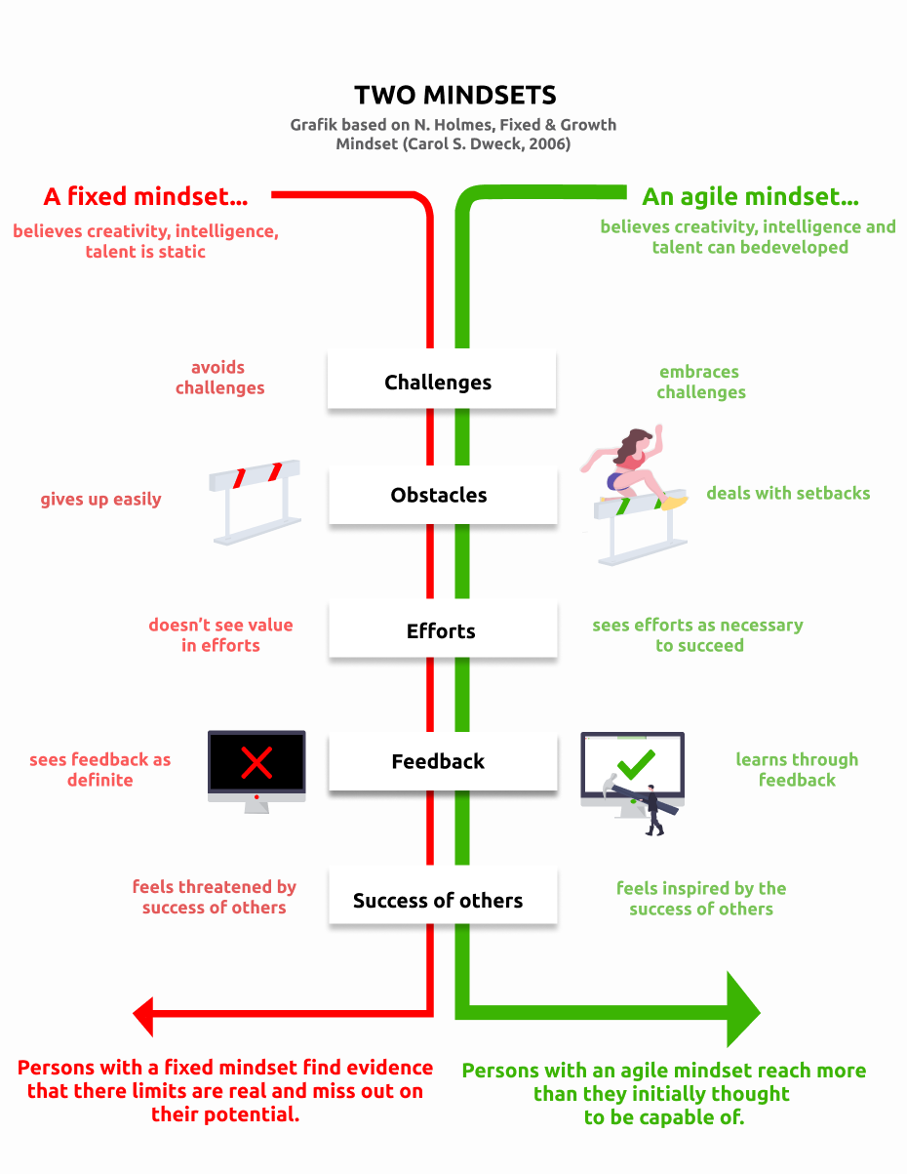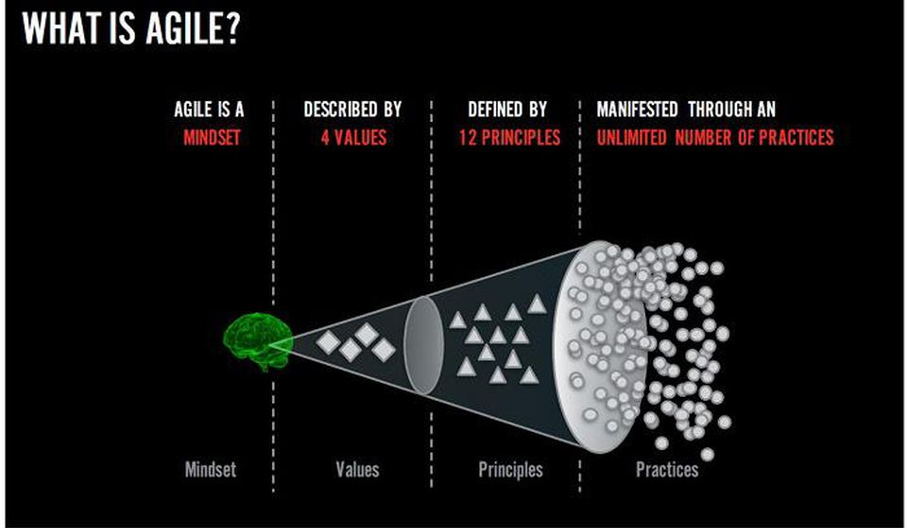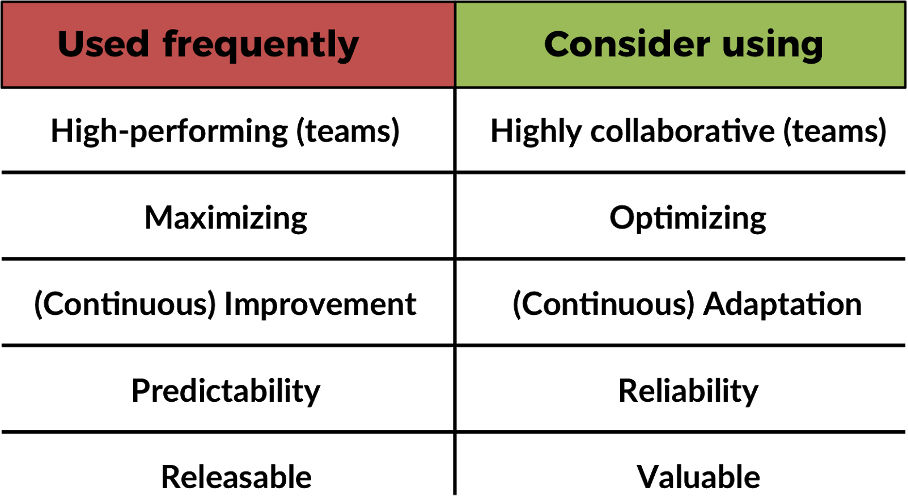Although there isn’t any mention of the term “agile mindset” in the original Agile Manifesto, it remains a key factor for success when transitioning into an agile way of working. The agile mindset is the starting point that will drive the transformation and allow agile working methodologies to naturally fall into place.
What is an agile mindset?
The agile mindset is where it all begins. It is an essential building block to implementing agile working methodologies. The agile mindset is best described by Stanford University Professor Carol Dweck:
“The agile growth mindset perceives defeats as information about what to do differently and not as a diagnosis of low talent.”
– Carol Dweck, 2006
Dweck is well-known for her work on mindsets, most notably the difference between a “growth” and a “fixed” mindset. The former views obstacles as an opportunity for growth, whereas the latter views obstacles as a measurement for what they are capable of achieving. However, it would be oversimplifying to group any individual into one category or the other. The concept of growth vs. fixed mindset is a spectrum that individuals can move across, and some may have a growth mindset in certain areas of their life and a fixed mindset in other areas.
In the context of agile, we can draw many parallels between a growth mindset and an agile mindset, as seen in the following image.

A person with a fixed mindset believes that they, as well as everyone else, are limited in what they can achieve, and obstacles are simply an evidence of their limits. On the other hand, a person with an agile growth mindset believes that setbacks are an opportunity for redirection, and that they, as well as everyone else, are filled with endless potential.
How does the agile mindset fit into the Agile Manifesto?
The agile mindset is the starting point for any agile transformation, as shown in the image below. It is the umbrella term that encompasses the four core values of the Agile Manifesto:
- Individuals and interactions over processes and tools;
- Working software over comprehensive documentation;
- Customer collaboration over contract negotiation;
- Responding to change over following a plan.
The four values are in turn defined by the twelve principles of agile, which are manifested through an endless amount of agile working methodologies, such as Scrum and Kanban.

If an agile mindset is in place, agile practices will naturally evolve over time. However, without an agile mindset, any type of agile tools or practices will be met with resistance and likely not succeed.
What are some methods for fostering an agile mindset?
There are several methods to help develop an agile mindset within an organisation.
1. Storytelling
The common phrase “show, don’t tell” can be used to foster an agile mindset. Sharing success stories makes it easier to convince any skeptics who might want some evidence or hard facts before they adopt new ways of working. Showing individuals how agile working principles have been implemented in similar departments, organisations or industries, and the benefits that they resulted in, will likely result in a much higher buy-in. People are often more open to tried-and-tested methods, particularly managers, who may be hesitant to reallocate resources without knowing what such a change could lead to. Therefore, using storytelling is a powerful tool that should be utilised to open minds about agile methodologies.
2. Language
It is essential that those leading the charge, particularly managers, adapt their language to reflect the values of an agile mindset. Many organisations are used to hearing language that quantifies success, and this essentially goes against the agile mindset. Limitless growth and potential are not quantifiable, therefore the language used internally should reflect that.

Replacing words such as “maximizing” with “optimizing”, as shown in the image below, reflects the focus and values that an agile mindset represents.
3. Learning by doing
Finally, most individuals learn best through practice. Reading information about agile principles or methodologies is a good starting point, but to fully embrace the agile mindset, individuals will need to learn how it works in practice. In the spirit of agile, this can be done in small iterative steps. Implementing Basic Scrum can be a first step and built upon over time. As a team slowly and incrementally experiences agile in action without having to overthrow their entire way of working, the mindset shift will naturally shift over time.
What is the timeframe for adopting an agile mindset?
Changing a mindset takes time and this needs to be recognized when embarking on a journey of agile transformation. On the fixed vs. agile growth spectrum, the goal is to bring individuals towards the latter. However, everyone will have a different starting point and therefore some may require more time than others to embrace new ways of working. Even with the conceptual knowledge of an agile mindset, breaking deeply ingrained habits or patterns of thinking requires patience. This is why using the right methods is essential to help to support this process.
